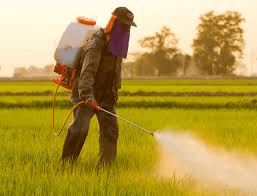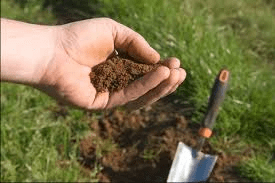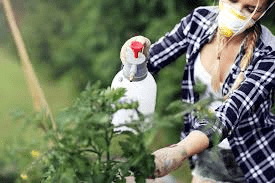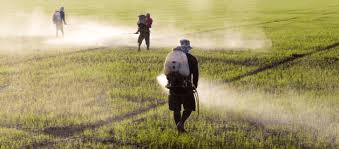Crop protection is essential for successful farming. It involves various methods and practices designed to protect crops from pests, diseases, and weeds that can harm them. Effective crop protection ensures that farmers can achieve high yields and maintain the quality of their produce.
This article will discuss the importance of crop protection, the different methods available, and explore Integrated Pest Management (IPM), chemical control with pesticides and herbicides, and biological control using beneficial organisms.
Importance of Crop Protection
Crop protection plays a vital role in agriculture. Here are some key reasons why it is important:
Ensures Food Security
1. Increased Yields: Protecting crops from pests and diseases leads to higher yields, which is crucial for feeding the growing global population.
2. Quality Produce: Healthy crops are more likely to produce high-quality fruits and vegetables, meeting market standards and consumer expectations.
Economic Benefits
1. Reduced Losses: Effective crop protection minimizes losses due to pests and diseases, which can be financially devastating for farmers.
2. Cost-Effective Practices: By investing in crop protection measures, farmers can save money in the long run through increased productivity.
Environmental Impact
1. Sustainable Farming: Proper crop protection helps maintain ecological balance by managing pest populations without causing harm to beneficial organisms.
2. Biodiversity Preservation: Healthy crops and managed ecosystems support diverse plant and animal life, contributing to a balanced environment.
Types of Crop Protection Methods

Farmers have various options for protecting their crops. Understanding these methods helps them choose the best approach for their specific situation. Here are the main types of crop protection methods:
Chemical Control: Pesticides and Herbicides
Chemical control involves using pesticides and herbicides to manage pests and weeds. While effective, it is essential to use these chemicals responsibly to minimize environmental impact.
Understanding Pesticides
1. Types of Pesticides: There are several types of pesticides, including insecticides (targeting insects), fungicides (targeting fungal diseases), and herbicides (targeting weeds).
2. Application Methods: Pesticides can be applied as sprays, granules, or in soil treatments. Follow label instructions for proper application rates and timing.
Responsible Use of Pesticides
1. Integrated Use: Combine pesticide use with other methods, like cultural controls, to minimize overall chemical reliance.
2. Targeted Applications: Apply pesticides only when needed and target specific pests to reduce harm to beneficial organisms and the environment.
3. Safety Precautions: Always wear protective gear during application and follow safety guidelines to protect yourself and the environment.
Understanding Herbicides
1. Types of Herbicides: Herbicides can be selective (targeting specific weeds) or non-selective (affecting all plants). Choose the right type based on the weeds present in your field.
2. Timing of Application: Apply herbicides at the right growth stage for maximum effectiveness, often before weeds become established.
Biological Control: Beneficial Organisms
Biological control utilizes natural predators and other beneficial organisms to manage pests. This method is environmentally friendly and promotes sustainable farming practices.
Using Natural Predators
1. Introducing Beneficial Insects: Release natural predators like ladybugs, lacewings, or parasitic wasps to control pest populations. These insects feed on harmful pests, reducing their numbers.
2. Creating Habitats: Plant flowers and shrubs that attract beneficial insects to your fields, providing them with food and shelter.
Microbial Control Agents
1. Bacteria and Fungi: Use beneficial microbes like Bacillus thuringiensis (Bt) to target specific pests without harming non-target organisms. These microbes can be applied as sprays or incorporated into the soil.
2. Formulations: Microbial agents come in various formulations, including liquids and granules. Choose the right product for your pest and application method.
Benefits of Biological Control
1. Reduced Chemical Use: Biological control methods can significantly reduce the need for chemical pesticides, promoting a healthier ecosystem.
2. Long-Term Pest Management: By establishing a balance between pests and their natural enemies, biological control can provide lasting pest management solutions.
Read Also: Gray Leaf Spot (Stemphylium spp) – Symptoms and Damage Control
Cultural Control Practices

Cultural control practices are essential methods used in crop protection that focus on managing the farming environment to reduce pest and disease risks. By altering farming practices, farmers can create conditions that discourage pests and diseases, leading to healthier crops. Here are some key cultural control practices:
Crop Rotation
1. Definition: Rotating different crops in the same field from season to season helps disrupt pest and disease cycles.
2. Implementation: Plan a rotation schedule that includes diverse crops, such as legumes followed by cereals, to improve soil health and nutrient availability.
Intercropping
1. Definition: Growing two or more crops in close proximity can reduce pest populations by increasing biodiversity.
2. Implementation: Pair compatible crops, such as corn and beans, where beans can fix nitrogen and provide shade, benefiting both crops.
Soil Management
1. Healthy Soil Practices: Maintaining soil health through organic matter addition, proper pH, and nutrient balance can enhance plant resilience against pests.
2. Cover Crops: Plant cover crops in the off-season to protect soil and prevent erosion while enhancing fertility.
Sanitation
1. Field Cleanliness: Regularly remove debris, weeds, and diseased plants from fields to reduce habitats for pests and diseases.
2. Equipment Hygiene: Clean tools and equipment to prevent the spread of pests and pathogens between fields.
Read Also: Recommended Number of Ruminant Animals per Housing Unit for Fattening
Physical and Mechanical Control Methods

Physical and mechanical control methods use physical barriers and actions to manage pests and diseases. These methods can be effective and environmentally friendly.
Physical Barriers
1. Netting and Row Covers: Use nets or lightweight covers to physically block pests from reaching crops.
2. Traps: Employ sticky traps or pheromone traps to monitor and catch pests before they can cause significant damage.
Mechanical Practices
1. Tillage: Regular tillage can disrupt pest habitats and reduce weed populations by burying them.
2. Hand Weeding: Manual removal of weeds can effectively reduce competition for crops without the use of chemicals.
Other Techniques
1. Flame Weeding: Using a propane torch to burn weeds before planting can be effective in controlling weed populations without chemicals.
2. Soil Solarization: Covering moist soil with clear plastic can heat the soil to levels that kill pests and pathogens before planting.
Monitoring and Early Detection
Effective crop protection relies on monitoring and early detection of pests and diseases. Regular checks can help farmers respond quickly before infestations escalate.
Regular Inspections
1. Field Scouting: Conduct regular walks through fields to look for signs of pests and diseases, such as unusual leaf damage or pest droppings.
2. Check Traps: Use traps to monitor pest populations and adjust control measures based on findings.
Record Keeping
1. Pest Records: Maintain detailed records of pest sightings, damage levels, and weather conditions to identify patterns and make informed decisions.
2. Crop Performance: Document crop growth and health to detect any correlations between environmental conditions and pest outbreaks.
Technology Use
1. Drones and Sensors: Utilize technology such as drones or soil sensors to monitor crop health and detect early signs of stress or pest activity.
2. Apps and Software: Employ agricultural apps that provide real-time data on pest outbreaks and weather conditions for better decision-making.
Sustainable Crop Protection Strategies
Sustainable crop protection strategies prioritize long-term ecological balance and aim to minimize the use of harmful chemicals. Here are some key approaches:
Integrated Pest Management (IPM)
1. Combination of Practices: IPM combines cultural, physical, biological, and chemical methods for a holistic approach to pest management.
2. Ecosystem Focus: Focus on maintaining healthy ecosystems to naturally manage pest populations.
** Organic Farming Practices**
1. Natural Inputs: Use organic fertilizers and pest control methods, such as neem oil or insecticidal soaps, to protect crops without synthetic chemicals.
2. Soil Health: Enhance soil fertility through composting and cover cropping to promote plant health and resilience.
Conservation Biological Control
1. Encourage Beneficials: Create habitats that support beneficial insects and natural predators, helping to control pest populations naturally.
2. Diversity in Planting: Plant a diverse array of crops to attract a variety of beneficial organisms that contribute to pest control.
Challenges in Crop Protection
While crop protection is crucial for successful agriculture, there are several challenges that farmers may face:
Resistance Development
1. Pest Resistance: Over-reliance on chemical controls can lead to the development of resistant pest populations, making control more difficult.
2. Management Needs: Farmers need to adopt integrated approaches to prevent resistance and maintain effective control.
Climate Change Impact
1. Changing Conditions: Climate change can alter pest and disease patterns, making it harder to predict outbreaks.
2. Adapting Practices: Farmers must adapt their crop protection strategies to cope with changing weather conditions and emerging pests.
Economic Constraints
1. Costs of Implementation: Investing in crop protection measures can be expensive, and small-scale farmers may struggle with financial limitations.
2. Market Pressures: Farmers often face pressure to produce high yields at lower costs, which can affect their willingness to adopt sustainable practices.
Knowledge Gaps
1. Lack of Education: Many farmers may not have access to the latest research and information on effective crop protection practices.
2. Training Needs: Ongoing education and training are essential to equip farmers with the knowledge they need to protect their crops effectively.
Crop protection is a vital aspect of agriculture that ensures healthy, high-yielding crops while promoting sustainability. By employing cultural, physical, and biological control methods, farmers can manage pests and diseases effectively.
Monitoring and early detection play crucial roles in preventing infestations, while sustainable strategies like Integrated Pest Management (IPM) help maintain ecological balance.
Despite challenges such as resistance development, climate change, economic constraints, and knowledge gaps, farmers can adapt and thrive by implementing effective crop protection practices.
With careful planning and commitment to sustainable methods, successful crop protection can lead to a healthier environment and improved agricultural productivity.
Read Also: 4 Steps to help an Orange Tree Produce Sweet Oranges






